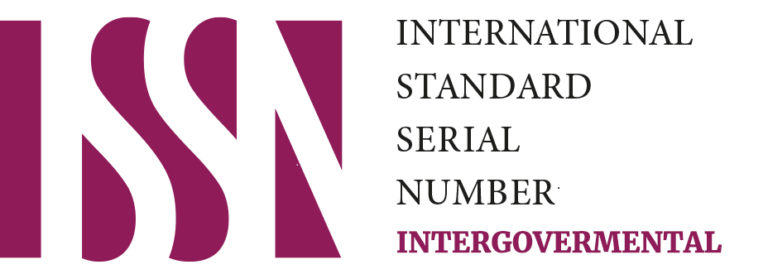ABSTRACT
Two years post 2020 will make a mark in the history books of all countries! The COVID-19 pandemic has changed global politics and most diplomatic relationships. The human race has learned basic lessons on climate change, and yet we seem far from resolutions. We have much work to do. Alongside, many countries have taken this as an opportunity to play dirty politics with the hope of strengthening their power. One such strong case is that of the war threat that India and China have been living in for a few months now, as of February 2021.
This paper aims to list the series of events that led to it, what went down on either side, actions taken, and the final events that led to the military’s backup on both sides. The idea is to evaluate what role diplomacy had to play in this entire episode and how diplomacy affected the outcome. I will also study the foreign policy approach for India in this context.
INTRODUCTION
India and China are the only two countries with populations over one billion. In 1950, India was the first democracy to show a supportive hand toward building relationships with China. In the last 70 years, this relationship has gone through a journey of ups and downs. ‘Hindi Chini bhai bhai’ is a phrase that I have heard growing up and has been coined in our history books. It means Indians and Chinese are like brothers. In early May 2020, Chinese troops moved to the LAC (line of control) towards the Indian border. There is also evidence to show that they encroached into the Indian soil at some points. This was the start of a long war threat between the two nations. The tension lasted for over nine months until the Chinese finally backed off in February 2021. Future will tell if this will undo the seven decades worth of work both countries have put in. Nevertheless, one thing is clear; the picture does not seem very pretty right now. The recent clashes at Galwan valley between the two countries are the reason for this.
This paper will evaluate every step that went down from the start till the end during this stand-off. I will also study the foreign policies and diplomatic relationships of India that impacted this journey. I will firmly conclude which side won in the end, as a personal analysis of the situation. The paper will throw light on some chronology of events, understand the background, and conclude an outcome.
HISTORY
“On 1st April 1950, India became the first non-socialist bloc country to establish diplomatic relations with the People’s Republic of China. Prime Minister Nehru visited China in October 1954. Though the border conflict in 1962 was a setback to ties, Prime Minister Rajiv Gandhi’s landmark visit in 1988 marked the beginning of improvement in bilateral relations.”[i] Let us quickly evaluate the seven-decade journey of Sino-India diplomatic relationships. I will cover only the most significant milestones.
The first three decades were a bumpy ride. Things started looking up with prime minister Rajiv Gandhi’s visit to China in 1988. A peace agreement to maintain tranquility on the LAC (line of control) was signed in 1993. Over 40 agreements were signed between the two nations in the two years of 2014-15. These agreements covered bilateral support for various matters that include culture, infrastructure, investments, trade, technology, defense, and more. Through the years, various such initiatives continued. Many parallel organizations and groups developed to work on the relationship from either side. India had built a concrete system to support these efforts. “The India-China Economic and Commercial Relations are shaped through various dialogue mechanism such as Joint Economic Group led by the Commerce Ministers of both sides, Strategic Economic Dialogues led by the Vice-Chairman of NITI Ayog and the Chairman of National Development and Reform Commission of China, the NITI Ayog and the Development Research Center Dialogue and the Financial Dialogue led by Secretary Department of Economic Affairs of India and Vice Minister, Ministry of Finance of PRC.”[ii] By 2017, India-China trade amounted to US$ 55.11 billion.
INDIA’S FOREIGN POLICY AND GLOBAL DIPLOMACY
One thing we know from diplomacy is that everything is inter-dependent. Also that the emotions and personalities of diplomats play a crucial role in how they play out. India and China are the largest democracies. Russia is a large population with tremendous military capacities. The US is the largest developed power. It influences various actions across the globe. Chinese are invested heavily in countries like India, the US, and Russia. Thus, how each responds during a crisis for another country depends on their relationships on other fronts. Those with power will naturally tend to sway decisions and perceptions. Like Ross says, “The practice of diplomacy was impervious to revolutionary passion; it remains a closed world, accessible only to an appointed elite, and intelligible only through their codes and terminologies.”[iii] Hence it is essential to evaluate these inter-links before we conclude on the India-China stand-off issue.
The diplomatic relationship history discussed so far clarifies that India and China have put efforts into showing solidarity. The foreign policies in India have reflected the same. From allowing up to eight banks with branches in India to encouraging foreign direct investments (FDIs) through the Chinese channels, have been crucial in defining how the Sino-India relationship builds. Due to the recent unrest in May 2020 at the LAC, this sentiment seems to remain changed.
1. INDO-US
India-US(The United States of America) relationships have run a rough course in the past. Conscious efforts have been made by India to discuss this issue with the US president and get support. The India-Pakistan war threat has been at the center of this issue. India’s foreign policy allowed huge sums of FDIs, knowledge-transfer, labor support through the years for the United States. Companies in the US have been actively hiring engineers and technical knowledge through the Indian talent and allowing lenient visa policies. However, the US has been silent on the whole Pakistan issue. Pakistan has perennially been at logger’s heads with India along the Line of Control (LOC). Since India’s partition in 1947, constant friction has severed relations between India and Pakistan. Initially, the US took a back seat in pressurizing Pakistan regarding this. Despite India demonstrating generous policies to benefit the US, the US held a very neutral ground until the Osama Bin Laden controversy plagued its security. After this point, the US took a complete u-turn and turned a cold shoulder to Pakistan. It also publicly showed support for India in its fight against Pakistan. This was the beginning of the concrete Indo-US relationship.
Beginning 2017, the US criticism on Pakistan’s issue started to become public, and different governments have supported India publicly.
Trump declared: “We can no longer be silent about Pakistan’s safe havens for terrorist organizations, the Taliban, and other groups that pose a threat to the region and beyond.” Trump’s open criticism of Pakistan for its “duplicity” in Afghanistan however is not new as far as US policy is concerned. For instance, in Obama’s 2009 policy review, he stated that one of the main goals of his policy was “to disrupt, dismantle, and defeat al-Qaeda and its safe havens in Pakistan, and to prevent their return to Pakistan or Afghanistan.[iv]
2. CHINA-US
Since 1960, the Sino-US relations were getting affected. The US, although considered one of the superpowers, is neck-deep in debt from external nations. China tops the list. With its increasing dependence on China, the US stayed very diplomatic and silent on commenting on Sino-India issues. China openly blocked India’s attempts to keep Pakistani terrorists in the United Nations(UN) list. It also openly supported Pakistan in the Bin Laden issue. It invested heavily in Afghan territories and also advanced interests in Taliban actions. Essentially, China showed interest in Islamic extremism, which India has blatantly pointed out. However, neither US nor Russia, until lately, have come out to speak up against it. This meant an entangled web of sensitive issues that persisted between the four countries. Every time an issue cropped up, nations would barely manage to balance their actions and navigate the situation to maintain global peace.
3. INDO-RUSSIA
Moscow has continued to express affinity towards Pakistan and the overall Taliban activities. This has been a reason for India to watch its steps closely and ensure conducive foreign policies. A significant milestone in this duo’s relationship is when Moscow has shown interest in opening the arms market to Pakistan. “Russia’s curious support to CPEC and its call to link it with the Eurasian Economic Union project is another indication of Russia attempting to accommodate Pakistan’s interests, something that is of concern for New Delhi. Further, the convergence of interests between Russia and Pakistan is bringing the two nations closer than they have ever been, to the extent that Moscow is actively considering opening the arms market to Pakistan.”[v]
Amidst all this, India began working on some global relationships to gather support against Pakistan and China.
4. INDIA AND OTHER COUNTRIES
India-Nepal relations were sour after Defence Minister Rajnath Singh inaugurated an 80-km-long road connecting the Lipulekh pass with Dharchula in Uttarakhand in May 2020. This road played a strategic role for India, but Nepal claimed the road passed through its territory. The heat seems to have settled down following visits to Kathmandu by Foreign Secretary Harsh Vardhan Shringla and Army Chief Gen MM Naravane in November. “As Chinese actions in key maritime channels fuelled greater concerns, foreign ministers of India, the US, Australia, and Japan held extensive in-person talks under the framework of the Quadrilateral coalition or Quad in Tokyo on October 6, signaling serious resolve to work vigorously towards a collective vision for a free, open and inclusive Indo-Pacific.”[vi] India also put efforts into improving strategic relationships with neighbors in the Gulf region, Central Asia, and member nations of the ASEAN (Association of Southeast Asian Nations) grouping. In a nutshell, we can say these were strategically planned all-round efforts by India.
In many ways, New Delhi’s efforts to further improve relations with Russia, Australia, Germany, South Korea, Vietnam, Indonesia and the African continent resulted in rich dividends.[vii]
We now understand how diplomacy dynamics between India, China, the US, and Russia have played out. We also understand how India played its part with some neighboring countries. We have reviewed the events that have impacted India’s stance on foreign policy and respective relationships. It is time to evaluate what actions India took to mitigate the risks and leverage the support. And then, I will evaluate where India stands as of April 2020, after which the clashes began.
IMPACT
Let us put each of these nations’ warmth towards India on a scale of one to five, one being the coldest, five being the warmest. This scale is as per the situation in 2019, just before the Sino-India clashes began. It is clear from the evaluation that Pakistan has always been a five while Russia and China lie between three and four, making it a constant carrot and stick game for India to maintain peace. The US went from being on three to five in recent times.
What do these mean for India? Talking of the US response to Pakistan, it has two to three clear positive points. In the opinion of Shiv Shankar Menon, the former National Security Advisor to India, three reasons justify why it is a significant milestone. It is the first-ever strong response from a significant power making it very clear that their support lies with India. Next, the fact that the Taliban cannot come to power was pointed out loud and clear. Finally, the outcome-based approach taken by Donald Trump, the US president, was a strong show of support towards India. “Unfortunately his actions were diluted by the people in his own government,”[viii] as there were severe administrative issues in Washington. “However, the incoming Biden administration’s policy toward India may leave doubt with both Modi government and the Indian public. The strengthening of US-India relations has always been an element that may influence Sino-India relations. Nevertheless, Sino-India relationship is largely dependent on how they will address their structural problems.”[1]
Now that we understand the global dynamics before the stand-off let us understand what happened between May 2020- February 2021 between India and China.
5. Events of the war threat period
5.1. What happened
Let me first give a quick timeline of what happened in those few months.
- Early morning of 5th May 2020, India reported Chinese troops’ activity at locations along the Sino-Indian border, including near the disputed Pangong Lakein Ladakh and the Tibet Autonomous Region, and near the border between Sikkim and the Tibet Autonomous Region. Additional clashes also occurred at locations in eastern Ladakh along the Line of Actual Control (LAC).
- India blames China for activating troops along the region and advancing towards the LAC. China blames India for stopping its infrastructure construction activities along the Galwan valley.
- As per Indian reports, on June 14/15, 2020, 20 Indian soldiers and 43 Chinese soldiers died during firing from either side.
- Chinese government initiated the construction of bunkers along the region. India warned China of encroachment.
- Amid the stand-off, India reinforced the region with approximately 12,000 additional workers, who would assist India’s Border Roads Organisationin completing the development of Indian infrastructure along the Sino-Indian border.[ix]
- Initially, the Indian government announced the Sino-Indian trade would not be affected due to these events as China announced they would be holding off on all activity at the valley. However, that did not happen over some time, and India put many regulations in place to block Chinese business in India. It was an act of pressurizing China to maintain peace at the border. Various apps, Chinese contracts, investments, and more were blocked/banned legally. [x]
- 2021 saw the first border clash on 20th January along the Sikkim region.
- On 11th February 2021, the clashes came to a stop, with both sides withdrawing.[xi]
5.2. Analyses and Reactions
Reports say that the 2020-2021 stand-off reflects Chinese insecurities in response to the Darbuk–Shyok–DBO road infrastructure project in Ladakh. China has also extensively developed its infrastructure in these disputed border regions and is continuing to do so. The revocation of Jammu and Kashmir’s special status in August 2019 by the Indian government has also troubled China. The Chinese government’s motives still seem to be ambiguous, while India sees it as an effort to change the status quo.
Another plausible theory is that these actions by the Chinese government do not seem to be surprising. They seem to follow a pattern of Chinese assertiveness. Along with the National Law in Hong Kong, the Chinese also targeted imports from Australia. Some major cyberattacks were reportedly blamed on the Chinese too. Japan criticized China for daily activities at Senkaku Islands and “suspicious aircraft heading to Japan’s airspace.”[xii] Taiwan, Malaysia, the Philippines, and Vietnam have expressed concerns about Chinese activity along their borders and in the sea. China charged two Canadians for spying.[xiii]
Another factor to note is China’s possible interest in India’s strengths for their personal gains. These include the shelter of Tibetan leaders and refugees in India, its vulnerability in the Indian Ocean, the positive relationship with its neighbors, and growing support from the US. India has smartly made its position count in some global groups like the G10 built by Britain to reduce dependence on China for cellular technologies, the Global Partnership on Artificial Intelligence, The International Solar Alliance, and the Global Coalition for Disaster-Resilient Infrastructure.
China made it very clear that it does not recognize the Union territory of Arunachal Pradesh as per the Indian Map. It made this announcement on various occasions, including eighth and 29th September 2020 and eighth October 2020. India maintained that China must not comment on India’s internal matters. Comments on territories of Tibet, Gilgit, Baltistan, Aksai Chin, and Shaksgam Valley were also made. Concerning a new Chinese village near Longju in disputed territory, Chinese foreign ministry spokesperson Hua Chunying released a statement in January 2021 stating, “…China’s position on the east sector of the China-India boundary, or Zangnan, is consistent and clear. We have never recognised the so-called Arunachal Pradesh illegally established on Chinese territory […] China’s normal construction on its own territory is entirely a matter of sovereignty.”[xiv]
CONCLUSION
So is the recent clash a Chinese attempt to deal with its internal securities, or is it its habit of assertiveness? Is this an act of terror? Is this an act of fake threat?
India and China spent seven decades building bilateral relationships. The last two decades have been significant in this journey. However, since 2019, the COVID-19 pandemic and the boundary crisis have brought the competitive and egoistic nature of the Sino-Indian relationship to the forefront—and are likely to persist, if not increase. “Recent developments have demonstrated that despite Delhi and Beijing’s efforts to engage and to stabilize their relationship, it remains a fundamentally competitive one that can spill over into conflict.”[xv]
I am of the opinion that the stand-off was a dual-purpose strategy from China’s side. India reacted to it with a very thoughtful strategy led by political agendas. Here is why. Firstly, the changing governance under Prime Minister Narendra Modi’s leadership has given a significant positive push to India’s image in global diplomacy. Secondly, New Delhi has been loud and clear on disallowing the Islamic majority and ensuring any terror threat is mitigated. Lastly, the US’s open acceptance of India’s sentiments makes it an ego issue for China. A lot went on behind the scenes too. It is believed that India had indirect pressure from the US to not go through with its defense orders with Russia, or else it could impact US investments in India. A layperson can now understand how the US used its influence on India to pushback on Russia and China to mitigate its weakness with those countries. Nevertheless, let us not forget that is what ‘foreign diplomacy’ is all about. In Barston’s words,
In the main, however, modern diplomacy has continued to be characterized by three main methods – personal diplomacy, unobtrusive or behind-the-scenes or so-called quiet diplomacy, and the widespread use of consensus in multilateral negotiations rather than various forms of voting.[xvi]
Russia and China, on the one hand, continued to work on bilateral relations with India. However, they also used their leverages to push India into supporting them against the US in the Taliban issue. Every nation has played its pawn in this game of chess, while we all currently stand in a complete stand-still mode.
The pandemic seemed like a perfect opportunity to China, and they took it. This is a typical offensive approach of diplomacy. Chinese government utilized the fact that all nations are currently caught up in dealing with the pandemic. Their thought must have been that since India’s resources are divided in internal capacity, their strength to fight would be less. However, to their surprise, India retaliated strongly. Its retaliation was even more decisive on the diplomatic front! And this would indeed have been a surprise to China. Thus, finally, it was forced to co-operate and behave amicably. As of date, both nations are re-negotiating terms to bring back solidarity and peace. But India’s sentiment is still hurt, and time will tell how China’s leaders change this to rejuvenate seven decades’ worth of work on diplomacy.
All of this demonstrates that no nation is competent for complete self-reliance. Countries need to remind themselves of the climate change impact we are all going through. To be able to come out victorious from this, we need to come together and fight it! And for this, diplomatic co-operation is the only way forward. In conclusion, nations need to come together to focus on the goals of the total seventeen SDGs specified. We need to talk about global peace and climate change with an even louder voice.
REFERENCES
- Indian Embassy, “Embassy of India,” Brookings, last modified September 9, 2020, accessed February 24, 2021, https://www.eoibeijing.gov.in/political-relation.php.
- Carne Ross, Independent Diplomat Dispatches from an Unaccountable Elite (New York: Cornell University Press, 2007), 8.
- Akshay Ranade, “Trump’s Afghanistan Strategy and Emerging Alignments in the Region: Implications for India,” Observer Research Foundation, no. 209 (November 2017): 2, accessed February 25, 2020, https://orfonline.org/wp-content/uploads/2017/11/ORF_IssueBrief_209_TrumpAfghanistan.pdf.
- , 5.
- PTI, “How the Ladakh Stand-off Changed India’s Foreign Policy,” The Hindu BusinessLine (New Delhi, December 27, 2020), https://www.thehindubusinessline.com/news/how-the-ladakh-stand-off-changed-indias-foreign-policy/article33430556.ece#.
- Sushant Singh, “Interview With Shiv Shankar Menon,” Youtube, last modified August 31, 2017, accessed February 25, 2021, https://www.youtube.com/watch?v=3Ul443bStU8.
- Kalyan Ray and Anirban Bhaumik, “Amid Border Tension, India Sends out a Strong Message to China,” Hindustan Times (New Delhi, June 1, 2020), https://www.deccanherald.com/international/amid-border-tension-india-sends-out-a-strong-message-to-china-844496.html; Rahul Singh and Sunetra Chaudhary, “Amid Ladakh Standoff, 12,000 Workers to Be Moved to Complete Projects near China Border,” Hindustan Times (New Delhi, May 31, 2020), https://www.hindustantimes.com/india-news/labourers-from-j-khand-to-lay-roads-on-china-border/story-1Hyh3KBaBwgEZ9eK5KhuFM.html.
- Archana Chaudhary, “India Takes Another Step to Block China Products With New Rules,” Bloomberg, last modified June 23, 2020, https://www.bloomberg.com/news/articles/2020-06-23/india-takes-another-step-to-block-china-products-with-new-rules; PTI, “No Chinese Firms In Road Projects, Not Even Joint Ventures: Nitin Gadkari,” NDTV, May 1, 2020, https://www.abc.net.au/news/2020-05-13/china-import-suspension-reminder-bejing-inflict-economic-pain/12243560; India External Affairs Ministry, “Official Spokesperson’s Response to a Media Query on the Recent Developments in the India-China Border Areas,” External Affairs Ministry of India (September 1, 2020), https://www.mea.gov.in/response-to-queries.htm?dtl/32919/Official_Spokespersons_response_to_a_media_query_on_the_recent_developments_in_the_IndiaChina_Border_Areas.
- Associated Press, “India, China Begin Troop Withdrawal From Contested Border,” Global Times, February 11, 2021, https://www.usnews.com/news/world/articles/2021-02-11/india-china-begin-troop-withdrawal-from-contested-border.
- Tanvi Madan, “Emerging Global Issues: The China-India Boundary Crisis and Its Implications,” Brookings, last modified September 9, 2020, accessed February 24, 2021, https://www.brookings.edu/testimonies/emerging-global-issues-the-china-india-boundary-crisis-and-its-implications/.
- Stephen Dziedzic, “China’s Meat Import Suspension a Reminder of Beijing’s Ability to Inflict Economic Pain,” ABC News, May 13, 2020, https://www.abc.net.au/news/2020-05-13/china-import-suspension-reminder-bejing-inflict-economic-pain/12243560; “Chinese Air Force Approaches Taiwan for Fourth Time This Week, Taiwan’s Military Says,” Reuters (June 19, 2020), https://www.reuters.com/article/us-taiwan-china-defence-idUSKBN23Q1A8; Madan, “Emerging Global Issues: The China-India Boundary Crisis and Its Implications.”
- Deepanjan Roy Chaudhury, “China Provokes India on Ladakh, Delhi Shoots down Unilaterally Defined LAC,” FirstPost, September 30, 2021, https://economictimes.indiatimes.com/news/defence/china-calls-ladakhs-status-as-a-union-territory-an-illegal-move-objects-border-activities/articleshow/78385064.cms?utm_source=contentofinterest&utm_medium=text&utm_campaign=cppst; Shishir Gupta, “In Rebuttal to China Claim over Ladakh, Arunachal, India Drops a Clear Warning,” Hindustan TImes, October 16, 2021, https://www.hindustantimes.com/india-news/india-rebuts-china-on-claim-over-arunachal-ladakh-with-a-clear-warning/story-KmvC0fDvM0zYv63NJmvI6M.html; Associated Press, “China’s Arrogant Rejection of New Map of Ladakh an Affront,” Economic Times, October 5, 2021, https://economictimes.indiatimes.com/news/politics-and-nation/view-chinas-arrogant-rejection-of-new-map-of-ladakh-an-affront/articleshow/78484687.cms?utm_source=contentofinterest&utm_medium=text&utm_campaign=cppst.
- Madan, “Emerging Global Issues: The China-India Boundary Crisis and Its Implications.”
- P. Barston, Modern Diplomacy, Third. (England: Pearson Education Ltd., 2006), 11.
- Akshay Ranade, “Trump’s Afghanistan Strategy and Emerging Alignments in the Region: Implications for India,” Observer Research Foundation, no. 209 (November 2017): 5, accessed February 25, 2020, https://orfonline.org/wp-content/uploads/2017/11/ORF_IssueBrief_209_TrumpAfghanistan.pdf.
Publisher information: The Intergovernmental Research and Policy Journal (IRPJ) is a unique interdisciplinary peer-reviewed and open access Journal. It operates under the authority of the only global and treaty-based intergovernmental university in the world (EUCLID), with other intergovernmental organizations in mind. Currently, there are more than 17,000 universities globally, but less than 15 are multilateral institutions, EUCLID, as IRPJ’s sponsor, is the only global and multi-disciplinary UN-registered treaty-based institution.
IRPJ authors can be assured that their research will be widely visible on account of the trusted Internet visibility of its “.int” domain which virtually guarantees first page results on matching keywords (.int domains are only assigned by IANA to vetted treaty-based organizations and are recognized as trusted authorities by search engines). In addition to its “.int” domain, IRPJ is published under an approved ISSN for intergovernmental organizations (“international publisher”) status (also used by United Nations, World Bank, European Space Agency, etc.).
IRPJ offers:
- United Nations Treaty reference on your published article (PDF).
- “Efficiency” driven and “author-focused” workflow
- Operates the very novel author-centric metric of “Journal Efficiency Factor”
- Minimal processing fee with the possibility of waiver
- Dedicated editors to work with graduate and doctoral students
- Continuous publication i.e., publication of articles immediately upon acceptance
- The expected time frame from submission to publication is up to 40 calendar days
- Broad thematic categories
- Every published article will receive a DOI from Crossref and is archived by CLOCKSS.






